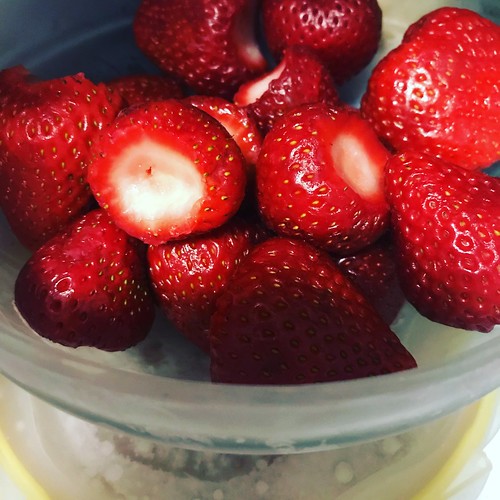
I find that Ebay Sellers have great yarn for sale, yet you have to read very carefully their shipping descriptions and their return or exchange policy description. I try to go for 98 to 100% feedback Sellers,but I am not that obsessed with perfection. If there are negatives or neutrals in their feedback, I read it and determine my risk factor. Someone who has a money back guarantee minus the shipping, wins my heart, but how they handle problems tells you how great of a seller they are.
Hopefully they will not make you go by the Rules of Acquisition from the Ferengi Alliance, hopefully they will not follow the Rules of Acquisition # 1 "Once you have their money . . . you never give it back. lol! Seriously "Never pay more for an acquisition than you have to." Rule of Acquisition #3. A partial list can be found at this link List of Rules .
The picture is very close to the color of the Yarn. Soft merino wool, I really don't know where this wool was hiding from me all my life. Merino wool is tightly crimped and springy. Staples are commonly between 2.5–4 inches (65–100 mm). A Saxon Merino produces between 3 and 6 kg of unwashed wool a year while a good quality Peppin Merino ram will produce up to 18 kg of unwashed wool a year. Merino wool is generally less than 24.5 micrometres (microns, µm) in diameter. Medium merino wool is between 20.6-22.5 µm, fine medium is between 19.6-20.5 µm, fine is between 18.6-19.5 µm, superfine is between 17.6-18.5 and ultra fine wool is between 12.5 to 16.9. Ultra fine wool is suitable for blending with other exclusive fibres such as Silk and Cashmere.

This is the second picture of the Cable Sweater I have 3 inches of ribbing and then 11 rows of knitting. Today I will finish the second part of the Cabling Braid. Cabling Knitting is what you do when stitches crossing behind are transferred to a small cable needle for storage while the stitches passing in front are knitted. The former stitches are then transferred back to the original needle or knitted from the cable needle itself. Other knitters prefer to transfer the stitches to a large safety pin or, for a single stitch, simply hold it in their fingers while knitting the other stitch(es). Cable stitches are generally permuted only on the right side, i.e., every other row. Having a spacer row helps the fabric to "relax".
I do love Cable Braids. Cables are often used to make braid patterns. Usually, the cables themselves are with a knit stitch while the background is done in purl. As the number of cables increases, the number of crossing patterns increases, as described by the braid group. Various visual effects are also possible by shifting the center lines of the undulating cables, or by changing the space between the cables, making them denser or more open. Celtic Braids, they are beautiful.
I guess it comes from my Genetic Make up of Celtic-Iberian heritage. The Celts of Europe entered Iberia through two separate migrations in the ninth and seventh centuries BC They generally settled in the north and assimilated various other groups into Celtic culture. The most striking Celtic group was that of the Celtiberians, who integrated the Celtic tradition and knowledge of iron working with Iberian culture.
In the fourth century BC the Celtici, a new wave of Celtic migration (of the La Tène culture), enter Iberia going as far as modern-day Portuguese territory and settle in the Alentejo also penetrating in the Algarve. The Turduli and Turdetani, probably descendants of the Tartessians, although celticized, became established in the area of the Guadiana river, in the south of modern Portugal. A series of cities in the Algarve, such as Balsa (Tavira), Baesuris (Castro Marim), Ossonoba(Faro) and Cilpes (Silves), became inhabited by the Cynetes progressively mingled with Celtic populations. The Lusitanians (most probably proto-Celt) began to inhabit the area between the Douro and the Tagus rivers (and progressively penetrate the High Alentejo). They are neighbored to the east by the Vettones (also probably proto-Celt). The Celtic Calaicians or Gallaeci inhabit all the region above the Douro river (modern Galicia and northern Portugal).
Let's see what happens with this sweater or jumper after the weekend is over. Saturday I have the Meeting of the CGOA Chapter in Oakland, California, Sponsored by the Men Who Crochet Group at Yahoo. The main purpose of the Crochet Guild of America is to educate the public about crochet, provide education and networking opportunities, and set a national standard for the quality, art and skill of crochet through creative endeavors.
CGOA is a not-for-profit organization established to:
1) Set an acceptable standard of work and strive toward excellence in all facets of crochet .
2) Ensure the preservation of historical crochet projects and promote future crochet design ideas.
3) Promote the art and skill of crochet through exhibitions, continuing education, demonstrations and seminars.
Membership in the Crochet Guild of America is open to all those who love crochet. Whether you are a beginner or an advanced crocheter, you are invited to join CGOA. You can download the membership application here http://www.crochet.org/pdfs/membro.pdf.
Thanks for stopping by.



1 comment:
That yarn is a nice color-I know you mentioned Aurora before, I've never seen it anywhere.....
BTW, I won an auction from that same seller today for a pattern. small world.
Post a Comment